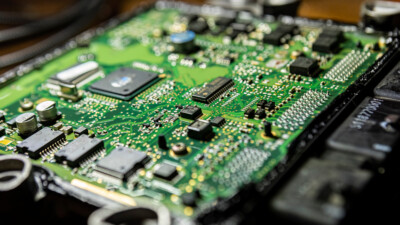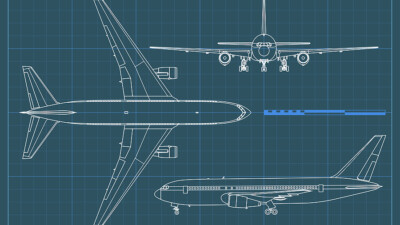PLM in the defense sector may not be what it once was but some things never change.
Believe it or not, the B-52H Stratofortress could be the first military aircraft to see a century of service. First flown in 1954, a total of 744 B-52s have been built, with the last one delivered in 1962. The US Air Force has stated publicly that B-52s are expected to operate through 2050.
Compare that with the Lockheed Martin F-35 Lightning II, which first flew in 2006 and is reportedly expected to remain in service until at least 2070. More than 1,200 F-35s have been built, as of July 2025. A projected service life of over fifty years is certainly impressive for such an advanced warplane, but it’s also considerably shorter than its much older, much larger cousin.
What is the military product lifecycle?
The early stages in the lifecycle of a military product are essentially the same as those for civilian ones. While there are certainly differences in terms of the time and costs involved, both military and civilian products begin with a concept, then move to development and prototyping before preparation for serial production.
However, there’s an intervening step before serial production begins that’s arguably unique to the military: codification or adoption into service. This is a mandatory step for state procurement, but it’s usually lengthy and not always transparent. The chance that a product might not be adopted for any number of reasons (technical, political, or otherwise) is one of the reasons that military products tend to come from larger enterprises with the resources to take on this risk.
Assuming a product is codified or adopted into service, the next step in the product lifecycle is serial production, followed by inclusion in military requirements. This latter stage is almost the exact opposite of codification or adoption, where inclusion basically guarantees that the product will be sold. How many and for how long is determined by the last step in the product launch: contracting.
Of course, as anyone acquainted with product lifecycle management (PLM) knows, selling a product is not the end of its lifecycle. Once military products are out in the field (like civilian products), they require training and maintenance support, as well as feedback and modernization. Eventually, years or decades after the product is initially launched, it reaches the decommissioning stage, when it’s gradually phased out of operation and production, maintenance, and support are reduced accordingly.
Are military product lifecycles getting shorter?
There’s no simple answer to this question because it depends on the kind of military hardware under discussion.
While the contrast between the B-52 and the F-35 might suggest that military product lifecycles in general aren’t as long as they once were, major platforms including aircraft, naval vessels, and ground vehicles are still designed to last for decades longer than most of their civilian counterparts.
That being said, there are other categories of defense technology that are seeing shorter or at least more iterative lifecycles. Broadly speaking, these tend to be software-intensive systems, especially unmanned aerial systems (UAS). The AAI RQ-7 Shadow, for example, began flying missions in 2003, and its retirement was announced just 20 years later. Pure software tools, such as platforms for command and control (C&C) applications or cybersecurity are now operating on an even more agile basis, with continuous delivery cycles now officially mandated by the Department of Defense.
The future of military PLM
Although the service life of many traditional military products continues to be measured in decades (and likely will for the foreseeable future), this has more to do with the large capital investment and complex logistical infrastructure that are necessary to design, build, and maintain these products.
The need to keep pace with rapid technological and geopolitical developments will likely shorten the functional lifecycles of many key systems, particularly those that are heavily reliant on software. As a result, militaries around the world are adopting more flexible, modular, and iterative design and procurement procedures in an effort to stay ahead of the competition.



